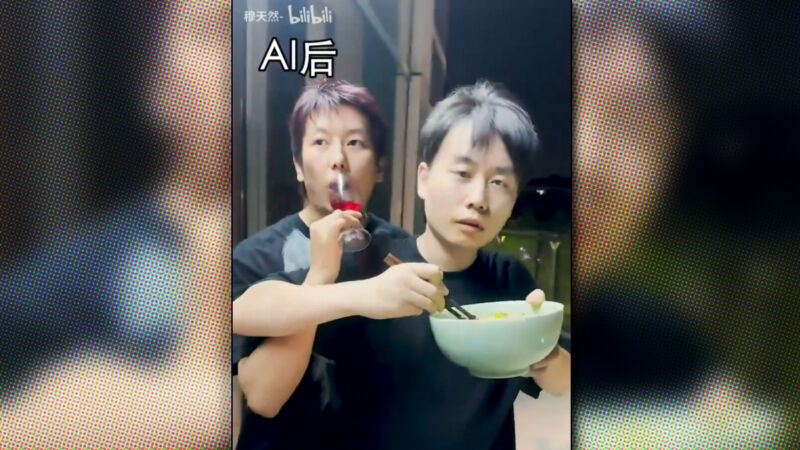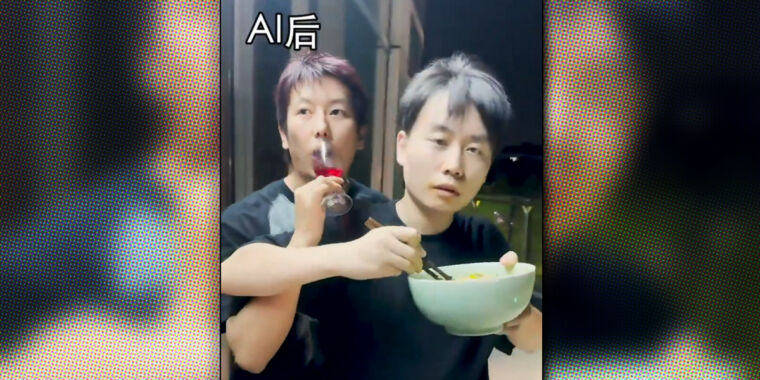
It’s no secret that despite significant investment from companies like OpenAI and Runway, AI-generated videos still sometimes struggle to achieve convincing realism. Some of the funniest fails end up on social media, leading to a new response trend on Chinese social media platforms TikTok and Bilibili, where users create videos poking fun at the imperfections of AI-generated content. The trend has since spread to X (formerly Twitter) in the US, where users have been sharing the humorous parodies.
In particular, the videos appear to parody image synthesis videos, in which subjects seamlessly morph into other people or objects in unexpected and physically impossible ways. Chinese social media replicates these unusual visual non-sequiturs without special effects by positioning their bodies in unusual ways while new and unexpected objects appear on camera from outside the frame.
This over-the-top imitation has struck a chord with X viewers, who find the parodies entertaining. User @theGioM shared a video, seen above.“This is performance art at its finest,” wrote one X user. “Art imitating life, imitating AI, almost shed a tear.” Another noted: “I think it needs another engine that turns into a speedboat and goes up in the air. Other than that, it's excellent work.”
An example of a Chinese social media video featuring two people imitating imperfect AI-generated video output.
While these parodies poke fun at the current limitations, tech companies are actively trying to overcome them with more training data (examples analyzed by AI models to teach them how to create videos) and computational training time. OpenAI unveiled Sora in February, which can create realistic scenes if they closely match examples in the training data. Runway’s Gen-3 Alpha suffers a similar fate: it can create short clips of convincing video within a narrow set of constraints. This means that generated videos of situations outside the dataset often end up hilariously strange.
An AI-generated video featuring impossible to transform people and animals. Social media users are imitating this style.
It’s worth noting that actor Will Smith beat Chinese social media users to the trend in February by mocking a hideous AI-generated viral video from 2023 in which he tried to eat spaghetti. That may also bring back memories of other humorous video synthesis fails, like the AI-generated beer commercial from May 2023, created using Runway’s earlier Gen-2 model.
An example of a Chinese social media video featuring two people imitating imperfect AI-generated video output.
While imitating imperfect AI videos may seem strange to some, people regularly make money pretending to be NPCs (non-player characters, a term for computer-controlled characters from video games) on TikTok.
For anyone alive in the 1980s, witnessing this rapidly changing and often bizarre new media world can cause cognitive whiplash, but the world is a strange place filled with wonders beyond imagination. “There are more things in heaven and earth, Horatio, than are imaginable in your philosophy,” as Hamlet famously said. “Including people pretending to be video game characters and faulty video synthesis output.”

